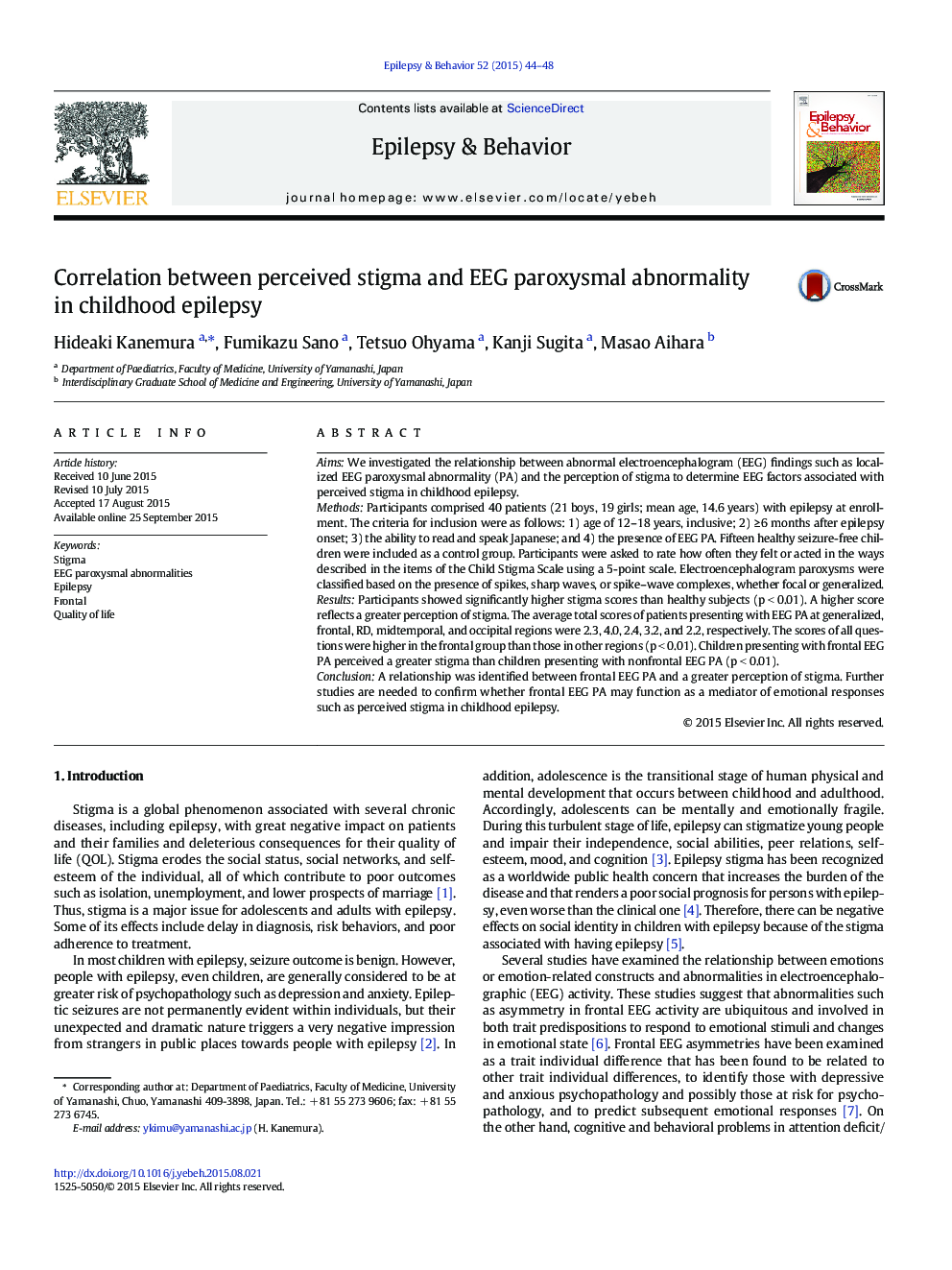| کد مقاله | کد نشریه | سال انتشار | مقاله انگلیسی | نسخه تمام متن |
|---|---|---|---|---|
| 6010368 | 1185876 | 2015 | 5 صفحه PDF | دانلود رایگان |

- We investigated the relationship between EEG focus and perceived stigma in epilepsy.
- A relationship was identified between frontal EEG paroxysms and perceived stigma.
- Frontal EEG paroxysms may mediate in emotional response as perceived stigma in epilepsy.
- Integrated interventions that break through epilepsy stigma in children are needed.
AimsWe investigated the relationship between abnormal electroencephalogram (EEG) findings such as localized EEG paroxysmal abnormality (PA) and the perception of stigma to determine EEG factors associated with perceived stigma in childhood epilepsy.MethodsParticipants comprised 40 patients (21 boys, 19 girls; mean age, 14.6 years) with epilepsy at enrollment. The criteria for inclusion were as follows: 1) age of 12-18 years, inclusive; 2) â¥Â 6 months after epilepsy onset; 3) the ability to read and speak Japanese; and 4) the presence of EEG PA. Fifteen healthy seizure-free children were included as a control group. Participants were asked to rate how often they felt or acted in the ways described in the items of the Child Stigma Scale using a 5-point scale. Electroencephalogram paroxysms were classified based on the presence of spikes, sharp waves, or spike-wave complexes, whether focal or generalized.ResultsParticipants showed significantly higher stigma scores than healthy subjects (p < 0.01). A higher score reflects a greater perception of stigma. The average total scores of patients presenting with EEG PA at generalized, frontal, RD, midtemporal, and occipital regions were 2.3, 4.0, 2.4, 3.2, and 2.2, respectively. The scores of all questions were higher in the frontal group than those in other regions (p < 0.01). Children presenting with frontal EEG PA perceived a greater stigma than children presenting with nonfrontal EEG PA (p < 0.01).ConclusionA relationship was identified between frontal EEG PA and a greater perception of stigma. Further studies are needed to confirm whether frontal EEG PA may function as a mediator of emotional responses such as perceived stigma in childhood epilepsy.
Journal: Epilepsy & Behavior - Volume 52, Part A, November 2015, Pages 44-48